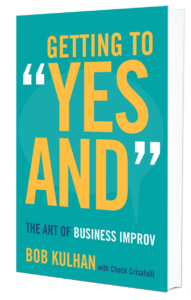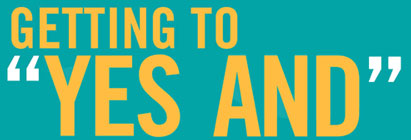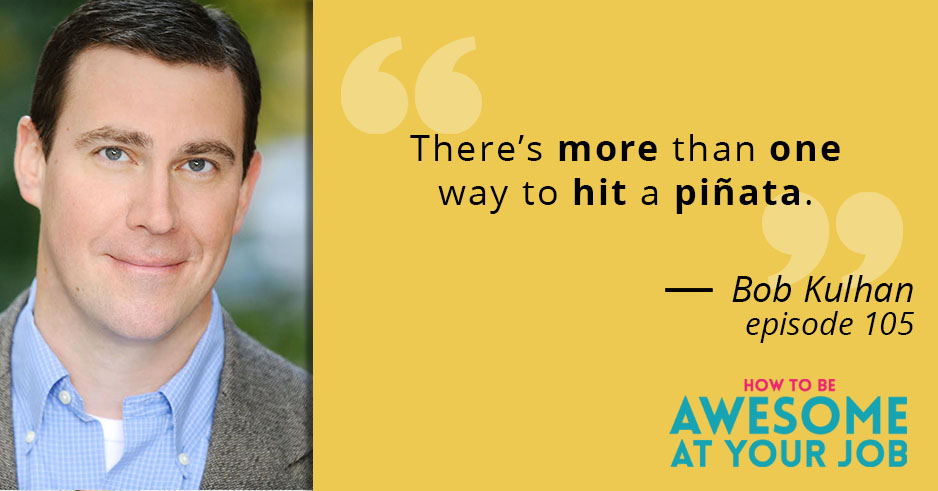For more than three years, I’ve dedicated incredible amounts of time and energy writing on Getting to Yes And: The Art of Business Improv (Stanford University Press). Thank you for your inspiration in this journey! GTYA was a project based in passion and love, and after countless hours of hard work, I’m so excited to announce that the book is officially available today!
Getting to Yes And is the definitive guide to business improv. I teach readers to think on their feet and approach the most typical business challenges with fresh eyes and openness. I show how improv techniques such as the “Yes, and” approach, divergent and convergent thinking, and focusing on being present can translate into more productive meetings, swifter decisions, stronger collaboration, positive conflict resolution, mindfulness, and more.
Getting To Yes And was created to help everyone improve their business performance and everyday life. As a prescriptive book, it moves past general philosophy and delves into the “how” improv techniques can be easily and thoughtfully applied to various real-world settings. I am sure you have at least one friend or family member who would benefit from reading Getting To Yes And, so please spread the word by sharing the news.
Thank you very much for your support! Enjoy the reading!
 Available Now
Available Now
The Art of Business Improv
Amidst the deluge of advice for businesspeople, there lies an overlooked tool, a key to thriving in today’s fast-paced, unpredictable environment: improvisation. In Getting to “Yes And” veteran improv performer, university professor, CEO, and consultant Bob Kulhan unpacks a form of mental agility with powers far beyond the entertainment value of comedy troupes.
Bob Kulhan, President, CEO & Founder, Business Improv
 At first glance, “improvisational leadership” might seem to be contradiction in terms. Leaders are thoughtful, strategic people; improvisation is a comedic art form and a team sport in which no one person is greater than the ensemble. However, when you redirect the tenets of improvisation away from comedy and toward leadership, they help your team perform at its best—by postponing judgment, communicating and connecting, leveling status, and achieving mindfulness. Improv isn’t a replacement for strategic thinking; rather, it’s a tool to buttress and support thoughtfulness and strategy. And that crucial moment when planning and strategy collide with execution is where improvisation shines.
At first glance, “improvisational leadership” might seem to be contradiction in terms. Leaders are thoughtful, strategic people; improvisation is a comedic art form and a team sport in which no one person is greater than the ensemble. However, when you redirect the tenets of improvisation away from comedy and toward leadership, they help your team perform at its best—by postponing judgment, communicating and connecting, leveling status, and achieving mindfulness. Improv isn’t a replacement for strategic thinking; rather, it’s a tool to buttress and support thoughtfulness and strategy. And that crucial moment when planning and strategy collide with execution is where improvisation shines.
How can you use improvisation to facilitate leadership development, help create team culture, and support the individuals in those environments? There’s no single equation for creating a great leader; if there were, there would be many more great leaders out there. But the very essence of improvisation is awareness and adaptability, both of which play a critical role in leadership. A leader must be aware enough to recognize what there is to work with in a given team, and adaptable enough to shape circumstances toward a desired conclusion. A leader must constantly make sense of the changing pieces in a moving puzzle—precisely how an improviser performs—and an improvisational leader understands how to use both EQ and IQ.1 Read More
By SUE SHELLENBARGER
Using humor at the office can boost your status, but only the right kind of humor
![]() Colleagues who make others laugh are seen as more self-confident, competent and higher in status, according to a series of experiments by researchers at the University of Pennsylvania’s Wharton School and Harvard Business School. This conclusion, compelling for the many people who have spent on clothes, cars, credentials or coaching to burnish their image, has gotten some understandable attention recently.
Colleagues who make others laugh are seen as more self-confident, competent and higher in status, according to a series of experiments by researchers at the University of Pennsylvania’s Wharton School and Harvard Business School. This conclusion, compelling for the many people who have spent on clothes, cars, credentials or coaching to burnish their image, has gotten some understandable attention recently.
Laughs are a risky path to prestige, however: Tell just one inappropriate joke and your status among peers hits the skids.
Humor is often seen as a sign of intelligence, and delivering a joke well requires sensitivity to others’ moods and tastes. John Thorne often uses self-deprecating humor to elevate his employees’ status among clients. As president of Automotive Events, a Cleveland-based producer of car-related promotions, he’s often the one who wins new clients. Read More
Why the tenets of improv are key to thriving in today’s changing workplace.
 Only two decades ago, most executives wore business suits to work almost every day. Then, as dot-com companies flourished, powerful corporate giants like Bill Gates tossed the tie and showed up to work in a dress shirt, blazer, and dress slacks. Now, in 2017, billionaire titans of industry casually wear hooded sweatshirts, T-shirts, and occasionally (gasp!) flip-flops to the office.
Only two decades ago, most executives wore business suits to work almost every day. Then, as dot-com companies flourished, powerful corporate giants like Bill Gates tossed the tie and showed up to work in a dress shirt, blazer, and dress slacks. Now, in 2017, billionaire titans of industry casually wear hooded sweatshirts, T-shirts, and occasionally (gasp!) flip-flops to the office.
The evolution of workplace attire exists in concert with the ascension of millennials, who insist on a new type of corporate environment, different than their parents’ workplaces. Many of America’s future business leaders desire a casual work culture, in which fun features as a fundamental part of the nine-to-five, and corporate America is responding! Glance through any of the many lineups for “the best places to work”: Facebook, Twitter, SAS, and Google, (to name a few) are all successful, powerful, multibillion-dollar organizations, and they also each boast the reputation of being “fun” while thriving. The message: you can have fun and still be incredibly productive. Read More
 “People don’t quit companies; they quit people.” This old saying is as true today as it was when a caveman first carved a crude caricature of it on the corporate cave wall. When you create an environment that treats people positively, you increase your odds of retaining great talent.
“People don’t quit companies; they quit people.” This old saying is as true today as it was when a caveman first carved a crude caricature of it on the corporate cave wall. When you create an environment that treats people positively, you increase your odds of retaining great talent.
What’s the best way to create this environment? Improv—which is grounded in respectful communication, emotional intelligence, mindfulness, personal connection and a shared purpose—can play a critical role in creating a workplace that engages and retains great employees.
Here are five ways to create an improvisational workplace that will engage and retain employees. Read More
 You won’t find giggles in this script for mastering business improvisation by Second City alumnus Bob Kulhan. A skills-focused walkthrough to “allow serious people to accomplish serious business in the most effective way,” the book shows how improv draws on communication science like behavioral decision theory.
You won’t find giggles in this script for mastering business improvisation by Second City alumnus Bob Kulhan. A skills-focused walkthrough to “allow serious people to accomplish serious business in the most effective way,” the book shows how improv draws on communication science like behavioral decision theory.
Using Kulhan’s “yes, and” approach, leaders create “mental hiccups in the business mind” that upgrade reacting, adapting, and communicating to higher levels of critical thinking. One key: teaching our brain to postpone natural leaps to judgment in favor of “unconditional acceptance.”
With advice from Kulhan—now an adjunct professor at Duke and Columbia universities—and practice, you can improvise better negotiations, brainstorming, and that meeting with your moody boss.
It’s an admission ticket to a performance of you at your best.
 Bob Kulhan, a veteran improv comedian and instructor who also happens to be an adjunct professor at Duke and Columbia Universities, has built a thriving consultancy, Business Improv, by providing experiential training to companies such as Ford, American Express and Verizon Wireless.
Bob Kulhan, a veteran improv comedian and instructor who also happens to be an adjunct professor at Duke and Columbia Universities, has built a thriving consultancy, Business Improv, by providing experiential training to companies such as Ford, American Express and Verizon Wireless.
Kulhan learned at the feet of comedy royalty such as Amy Poehler and Tina Fey, but he also draws on cognitive psychology and behavioral economics to teach people how to think on their feet. The key principle in modern improv is “Yes, and”—a gesture of trust and acceptance that enables a comedian (or businessperson) to build on what they’ve been given. Its contrast, “Yes, but,” kills the comedy, or in business, stifles communication and creativity. “The same skills that make for exceptional comedic improvisation—intense listening, focus, energy, engagement, teamwork, authenticity, adaptability—are skills that any person can utilize to positively impact the workplace.” Read More


